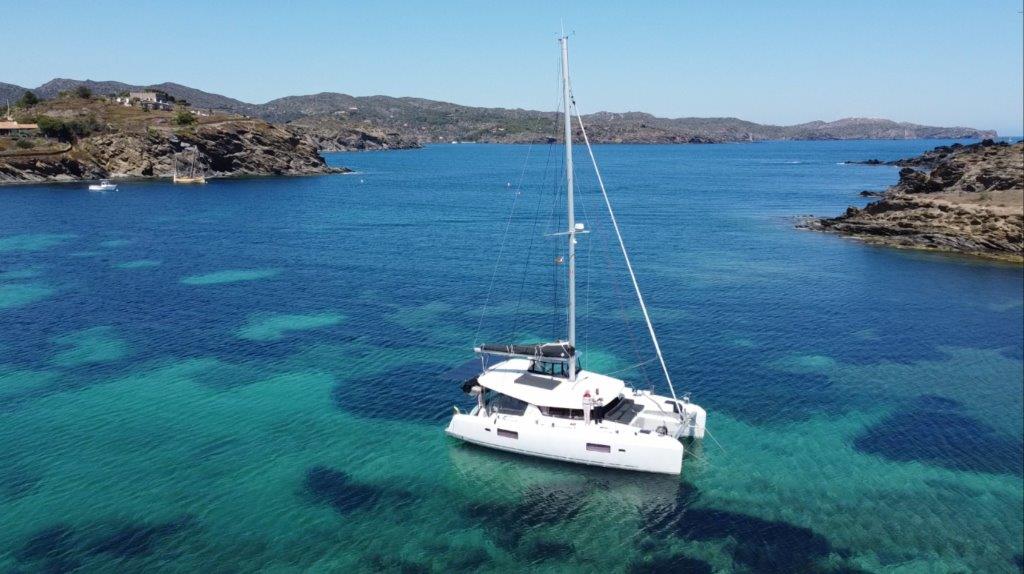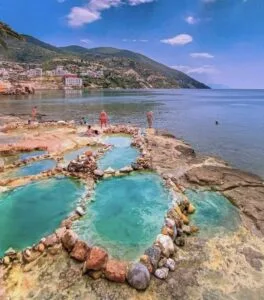Last episode of sailing in Spain! Because after Barcelona, we entered the Costa Brava which is the last coastal region in Spain on the northeast coast:

Costa Brava is known for its tourists resorts like Lloret da Mar, Blanes, Palamós. Because of the many sunhours and beautiful beaches. So we were pleasantly surprised to discover also picturesque villages like Roses and Cadaques.
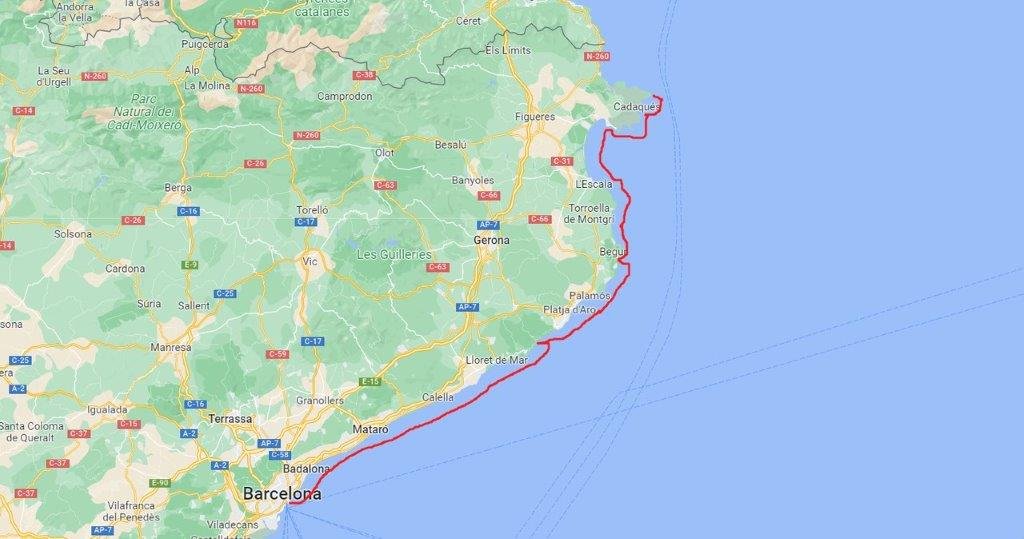
Anchoring
After we left Barcelona where we also picked up our new anchor (Ultra Marine 33 stainless steel), we wanted of course test the anchor right away! So we choose a couple of anchoring spots along the Costa Brava coast. The first bay to anchor was in Tossa da Mar and this is the second one, near the beach of Sant Feliu de Guíxols:

The anchor held perfectly, also with more wind or strong current, so the first experiences are good.
We enjoyed especially the bay of Begur, the village of Fornells and an area called Aiguablava with beautiful cliffs and little beaches. On the internet it said it’s a favorite among locals in Spain and it was weekend, so we saw a lot of families walking around or sitting on the beach.

The background sounds that you hear on the boat of children playing and running around on the beach, adults talking and laughing and the smells of BBQ coming your way, gives a real holiday feeling.
Catalonia
This area of Spain is also known as Catalonia. It’s a proud autonomous community which even stretches over the French border to the province of Roussillon. It has 7,5 million in habitants in total, with also their own official language, Catalan. For instance chocolate or fish are written with an x (xocolata and peixos).
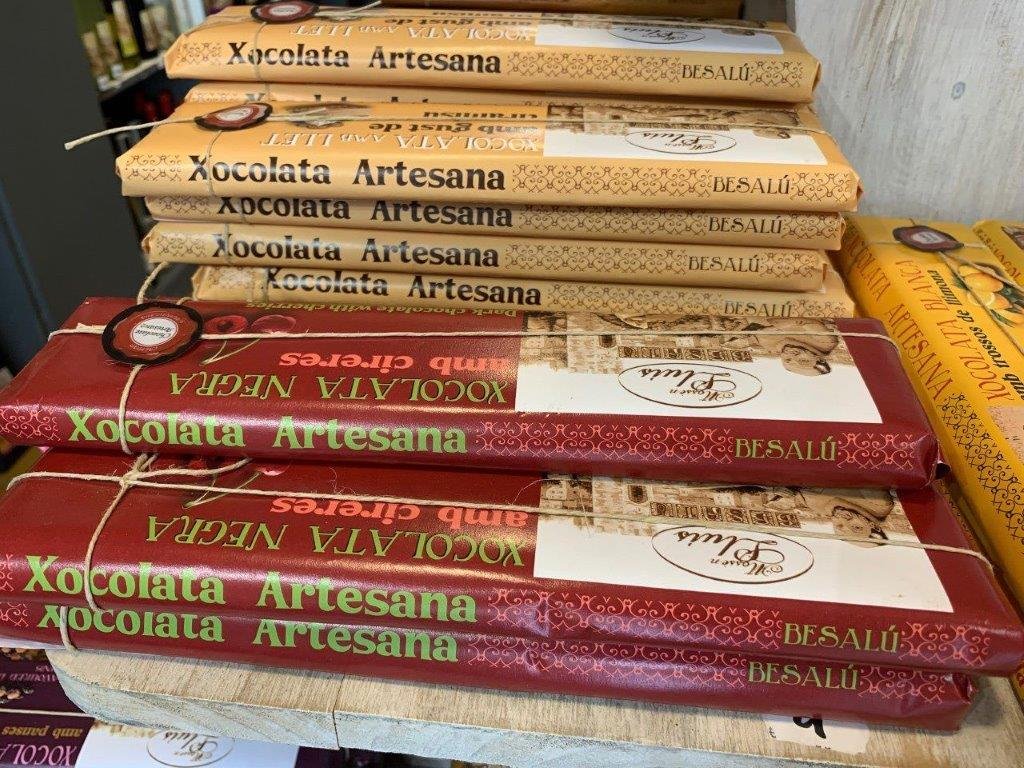

You see the Catalan flag everywhere. This building is typical for this area. In the 18th century, many Spanish inhabitants left for Cuba in South America to work. Those who made their fortune built luxurious modernist houses (all over Catalonia) and were called “Indianos” by the population.

Roses
On our way to Roses (or Rosas in the Catalan language), we noticed that the wind was picking up quite strongly. This is the famous Tramontana: the wind in this area.
The tramontana is a dry, cold and strong wind that blows from the northwest. It accelerates, due to the Venturi effect, during its passage between the Pyrenees, the south of the Massif Central and the Carnic Alps. According to the inhabitants, the tramontana wind always blows in multiples of 3 days.
And with 6 beaufort (35-40 knots of wind) we found it a good to find a harbor for to have some shelter. Because sailing in this NW wind, against the waves, is really is an attack on your boat! The water hits violently to your boat and although it is spectacultar to see sailing boats moving up and down on the water, it’s not very comfortable and even dangerous if you have your sails up.
So the harbor of Roses was a warm welcome to us! And warm it was! The temperatures and tourist season is really picking up in May and you see a lot of people coming all over Europe to the Costa Brava to visit the nice villages and beaches.
This is the beach of Roses. And I had to laugh a little, because across from this beach there was a hotel called Le Bonaire. I always wonder why people who live in such beautiful areas like Roses in Spain, still name their locations after other places in the world (in another Spanish town we saw B&B Portofino 😉). But I have to admit, this white sanded beach in Roses could be in the Carib as well!

The are of Roses has great cycle paths, so when we discovered the app with routes to cycle and we choose a nice trip inland.


Cadaques
After 3 days the wind did indeed decrease to normal values and we sailed further from Roses towards the beautiful city of Cadaques. We stayed close to the coast during this sail, because the Costa Brava (meaning wild coast) has impressive cliffs.
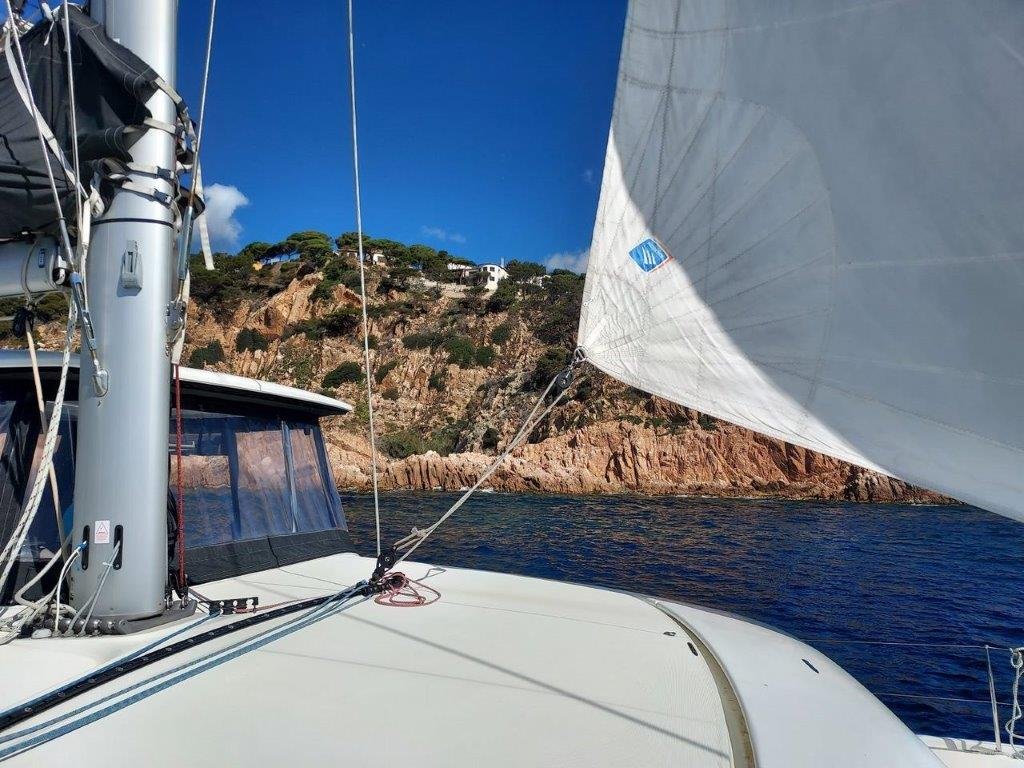
When you sail closer to the coast, the depth of the water is between 7 to 20 meters. This means more fishing gear around. Fishermen mark their fishing spots with flags, usually underneath there is a net, a line or baskets to catch fish. For boats like us important to avoid sailing over the flags (by accident), because the line can end up in your propellor and can damage the engine.
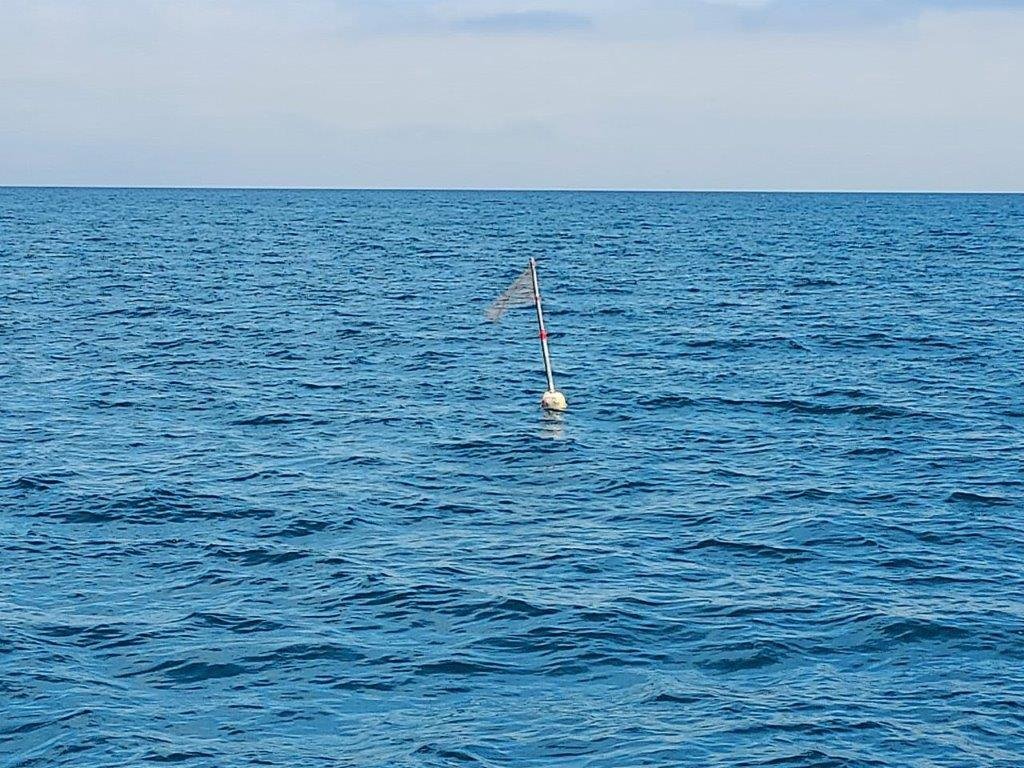
The bay of Cadaques is half moon shaped and has a great backdrop of the old houses of Cadaques. We really enjoyed cycling here, eating ice cream at the boulevard and enjoying the holiday atmosphere.


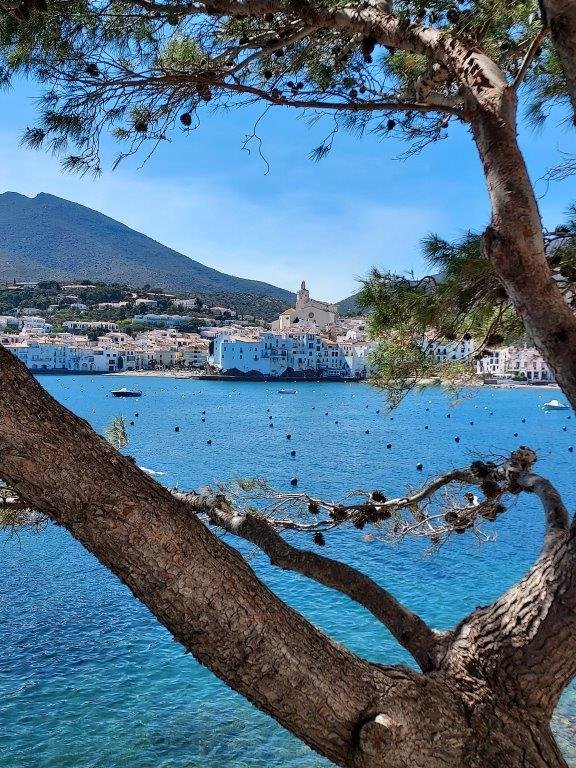
Port Lligat
Just around the corner of Cadaques is the bay of Port Lligat. This is a more protected bay, so we anchored there. Now we are only 20 km away from the French border, this will be our last stop in Spain!
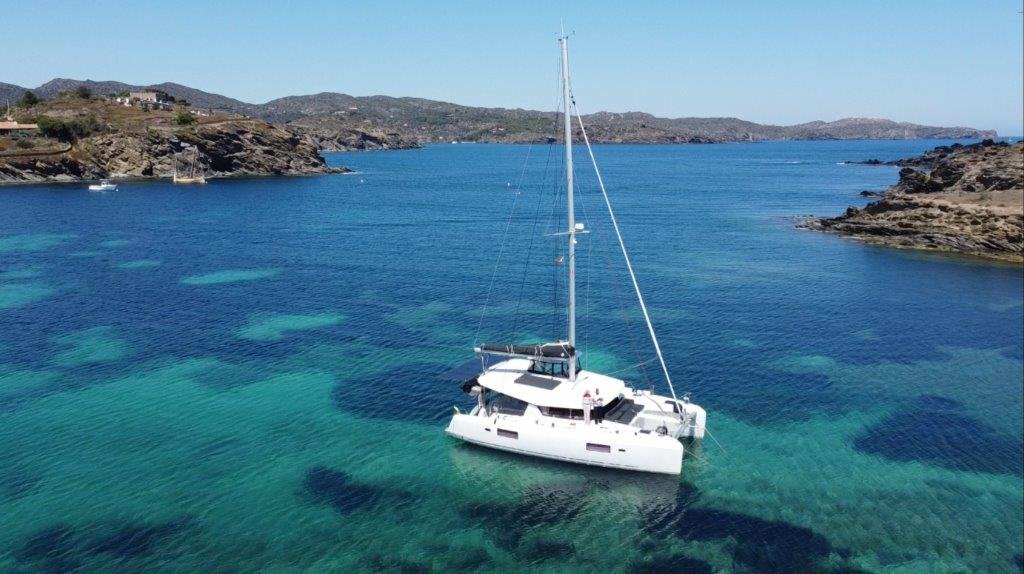
Another reason for our stop in Port Lligat is that the house of famous painter Salvador Dalí is situated along this bay. And we wanted to visit his house, because during our stay in Catalonia we also visited the Dalí Theatre-Museum in Figueres and the Dalí Castle in Púbol. So the house of Dalí would complete our “Dalí Triology”.
We are very impressed by the versatile artist Dalí was. So we will dedicate a blog to Dalí, to share our experience and pictures of our visits to the 3 Dalí places. We were also able to make a video of Dalí’s house with our drone.
But first we are going to a 4-day conference for Trainers in San Diego in the USA where I will be a speaker. I have been to this conference 4 times before, 3 times as a speaker. And now back again in the USA! I will write a blog about the conference, my workshop and the 1 week California Roadtrip we planned after the conference.
